Could your cardio be doing more harm than good? Here are three major cardio mistakes to avoid and tips on how to get the most out of your workout. Plus, a HIIT Metabolism-Boosting Workout to get you started in the right direction.
The truth is, cardio exercise can be very healthy for you, but not when done the way many people go about it. Poorly done cardio with sloppy form can actually cause your body more harm than good.
Think of jogging. I’m sure you’ve seen that person jogging with rounded shoulders, knocking knees, and twisting ankles, looking completely miserable as they continue trucking along for the sake of calorie burn.
Calorie burn certainly is one of the benefits of cardio when done correctly, but it should not be the only or main goal without taking into account other factors that play more significant roles in the success of a fat loss plan.
Looking for an easy way to get started working out? Grab our FREE Beginners Workout Guide – 3 Weeks To Tighter Abs, Sculpted Arms, And Toned Legs, by clicking here!
We’re going to go over the 3 worst types of cardio and provide you with better alternatives to achieve what you really want out of cardio efficiently and without injuring your body.
The 3 Worst Cardio Mistakes
1. Long Durations and Staying in the “Fat Burning Zone”
When the goal is weight loss, people usually want to burn as many calories as possible. Long duration exercise can seem like it burns the most calories, but when compared to short duration, high-intensity exercises, it doesn’t come close to increasing your overall daily calorie burn.
Many of the calories you burn during the day happen when you’re at rest. For example, the “calories burned” you usually see on a treadmill or elliptical machine are only a fraction of your calorie-burning potential. By making your workouts more intense, you’ll increase your metabolic rate and continue to burn calories long after the workout is complete. Even while you sleep!
If your goal is to stay in the “fat burning zone” (between 60-70% of your heart rate maximum), you may burn a greater percentage of fat while exercising, but the rest of the day your metabolism will be slower than it would have been had you done a high-intensity workout instead.
As you exercise for longer periods of time, your intensity has no choice but to decrease. It’s simply not possible to exercise very intensely for a long time. Inversely, as intensity increases, less time is required to achieve a higher calorie burn.
Instead of doing everything you can to make your workout last longer (e.g., going slower, hunching over, holding onto the handlebars of a machine, or taking lots of rest periods), you’d be much better off performing shorter, more high quality exercises. This approach to fitness leads to a raised metabolism and a more efficient, fat-burning body, even while you’re at rest.
For fat loss, your main goal should not be to burn the maximum amount of calories possible in each sitting. It’s far easier to control your calorie intake than it is to maximize your calorie output. You can only exercise so much in a day. Our output has much less flexibility than our input. It is easy to overeat, but over-exercising is exhausting and can be harmful to your body.
Keep in mind that what is high intensity for one person is going to look different than what is high intensity for another. When just starting out, you may feel very out of breath and winded, but keep at it and what was once a very high-intensity workout for you will become your warm-up. When we start focusing on the quality of our work, our bodies naturally adapt.
To see continued fat loss and strength building, it’s best to keep challenging your body with new and different types of workouts. Always focus on the quality rather than the duration. If we put duration before quality, the quality suffers. If we put quality before duration, the duration will come with time and practice.
Bottom Line: When it comes to exercising, focus on quality and intensity instead of duration.
2. Thinking “Inside the Box”
I know I used to get obsessed over doing “cardio” at the gym, thinking it was the only way to get my heart pumping. Many people think of gym cardio machines when their goal is fat loss, forgetting we have a whole world around us full of opportunities to get active and raise our heart rates.
Cardio can be built into our everyday lives instead of only being done at the gym. For example, taking the stairs more often, walking, or biking instead of driving are easy ways to slip in healthy cardio. We can park farther away from stores to get in extra steps or we can carry our luggage up the airport stairs instead of taking the elevator.
The point is this: Our modern lives have become a bit too comfortable and our metabolic rates have suffered. If you really want to increase your metabolic output, it makes more sense to create a more active lifestyle than it does to just drive to the gym a couple times a week to ride the elliptical.
It’s not that gym cardio machines are bad—they just aren’t the only way to get your “cardio” in.
Bottom Line: Create an active lifestyle, build exercise into your everyday life with simple choices like taking the stairs instead of the elevator, riding your bike to the store, or walking your dog more often.
3. Choosing Cardio for the Wrong Reasons
Now that we’ve discussed the many ways you can increase your cardio and energy output, let’s talk about how you can make it fun.
The number one way for you to get lean and stay that way for the rest of your life is by creating a lifestyle habit that you genuinely enjoy.
The truth is, age is not the limiting factor to getting lean that most people think it is. Lifestyle changes associated with aging are more to blame than aging itself.
When choosing a type of cardio that’s going to help you achieve a lean and healthy lifestyle, I encourage you to choose based on what you enjoy doing. Other factors, like the intensity, duration, frequency, and time, come next.
When building your perfect cardio routine it should be…
- Enjoyable
- Sustainable
- Effective
…in that order.
It’s okay if you’re tempted to put effective first, but just keep in mind that the results you get might not be as long lasting and you may not enjoy the process as much. You can decide what’s most important to you when forming your decision.
Here is a list of forms of cardio. It’s not a complete list (as there are a vast number of ways to increase your heart rate), but it’s a good start to get you thinking. As you read this list, pay attention to the feelings you get when imagining yourself doing them. Whichever ones put a smile on your face are most likely a good fit for you.
- Jogging/Running
- Swimming
- Biking
- Tennis
- Soccer
- Football
- Basketball
- Boxing/Martial Arts
- Skiing
- Snowboarding
- Skating
- Hiking
- Rock Climbing
- Dancing
- Trampoline Jumping
- Weight Lifting/Resistance Training
- Group Exercise Classes
- HIIT Workouts
- Competitive Racing (5k’s, triathlons, marathons, etc.)
- Playing with your dog/kids
My favorite way to do cardio is in the form of HIIT (high-intensity interval training). This is the form of exercise I enjoy the most, as the short time intervals really motivate me to work hard. Second, I find it very sustainable, as just a few minutes per day are all I need to maintain a lean physique. And, of course, the effectiveness is definitely there, as I’ve never been able to get or stay as lean as I have since I started incorporating these types of workouts a few years ago.
If you’re looking to try a short, high-intensity workout, we put one together below. It’s an easy starting point if you haven’t tried HIIT workouts before. See if you enjoy it and if you do, use it as your base to build upon for future workouts.
10-Minute Full Body HIIT Metabolism-Boosting Workout
Complete all exercises as a circuit. 30 sec rest between exercises. Repeat circuit 2X for a 10-minute workout.
For this workout, you don’t need any equipment other than your body and an interval timer. If you don’t have a timer, just use a simple watch or clock.
I recommend setting your intervals up as 30 seconds of work, with 30 seconds of rest between exercises. Rest periods are essential to keeping you strong and focused.
Once you have completed all 5 moves, start over for the second round. This should take you 10 minutes (including the rest periods).
I recommend beginners work at a slow pace. For advanced, you can speed up your pace to get a harder workout or you can increase the work interval time to 40 seconds and decrease the rest to only 20 seconds.
Chair Toe Taps
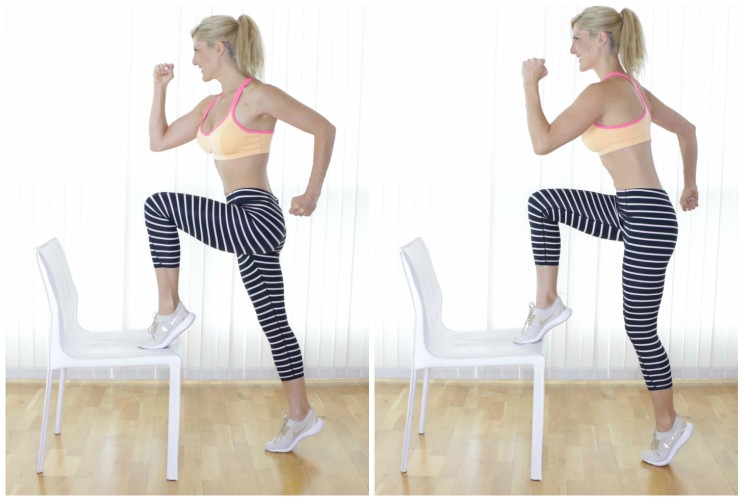
Grab a sturdy chair that has no wheels and won’t slide around during the exercise.
Stand in front of the chair about 12 inches away from it.
Step one foot up on top of the chair, tapping your toe on the top while making a jogging motion with your arms.
Keep your core tight and your head up, looking either slightly down at the chair or straight ahead of you.
Quickly switch sides and continue alternating sides at a quick pace.
Side Lunge Toe Touch
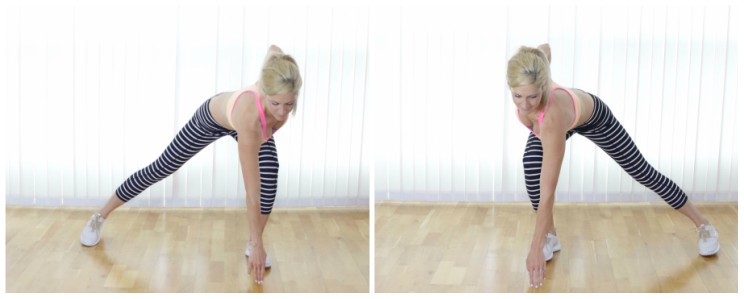
Step your right foot out to the side and reach down to touch your left toes. Make sure to bend your left knee so that it’s more like a lunge rather than a forward bend. Keep the weight in the heel of your left leg.
Stand up and change sides by sticking the left leg out to the left and reaching towards your right toes.
Alternate sides and move as quickly as you can while keeping good form.
Ski Bunny Side-to-Side Hops
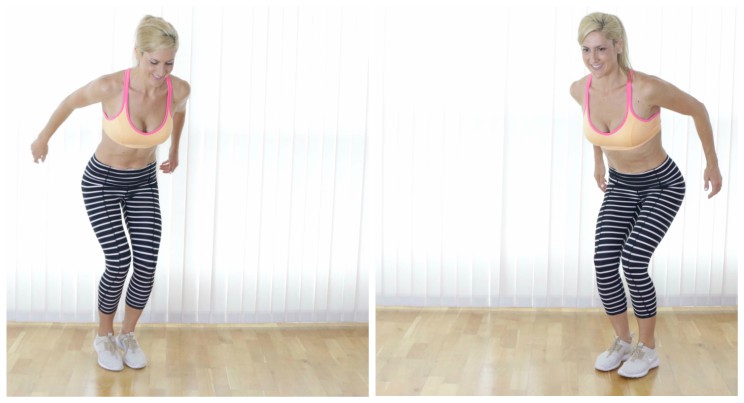
Start with your feet together and knees slightly bent.
Swing your arm back behind you and prepare to hop up and to the side.
Keep the hop small enough that you can do the reps quickly to get your heart rate up. Land as softly and gently as you can to protect your joints.
Curtsey Lunge Kicks
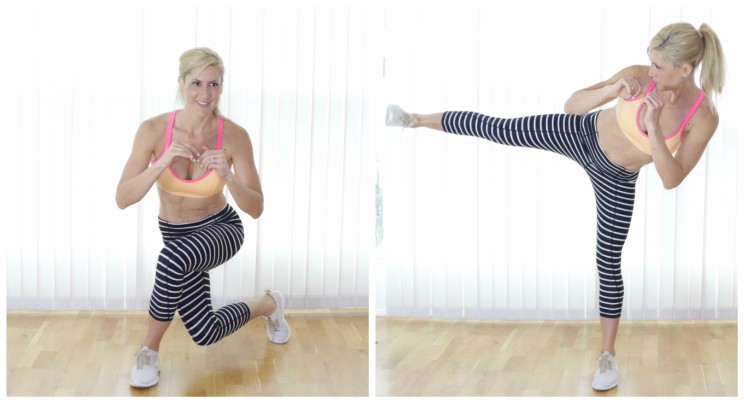
Start in a curtsey lunge position, similar to a back lunge but with your back leg crossing over the midline.
Hold your arms in front of you as if to guard your face.
Lift your back leg up and kick straight out to the side. Return back to the curtsey lunge position and continue on the same side for the entire 30-second interval of this first round.
Make sure to note which side you did first so you can do the other side on the next round.
Hand Walkouts

Start in a forward bend position with your feet shoulder-width apart and your hands on the ground. It’s okay if you need to bend your knees a bit.
Keeping your feet planted where they are, start walking towards a plank position. You can mark your position with a piece of tape on the ground to give you a goal line to pass each time.
Once your hands reach the final position, lower your hips and tighten your core muscles into a straight plank. Take one deep breath and then start to walk your hands back to the starting position.
Keep moving forward and back quickly to keep your heart rate up.
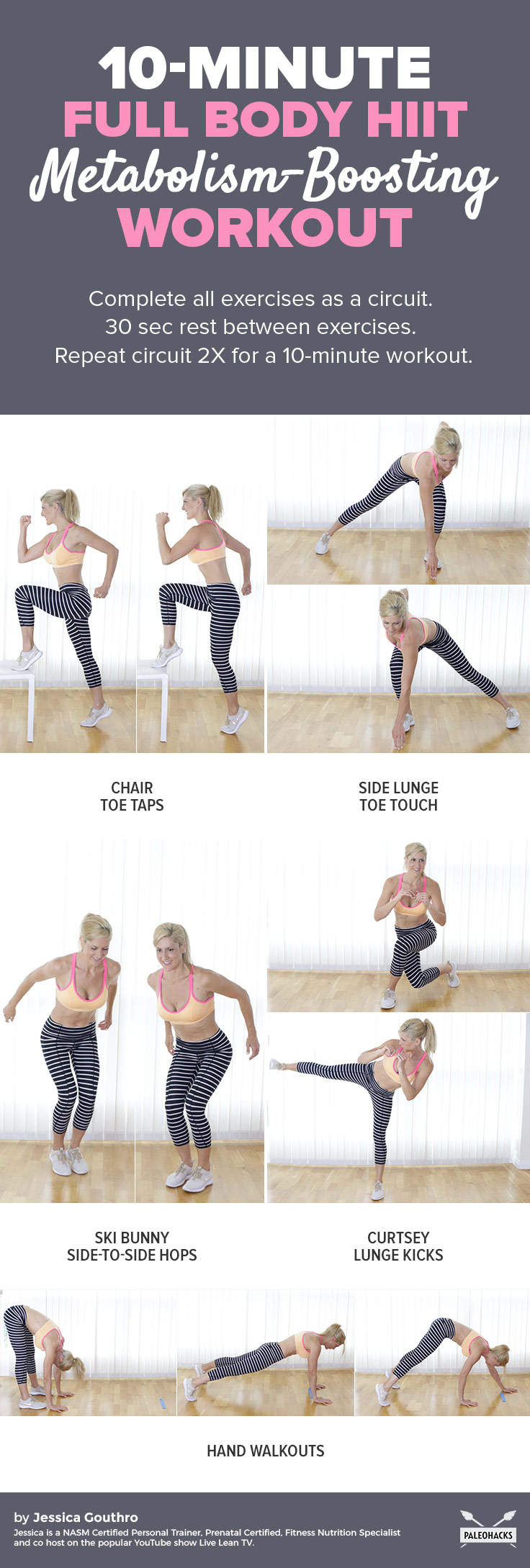
(Your Next Workout: The Total-Body Superhero Bodyweight Workout)


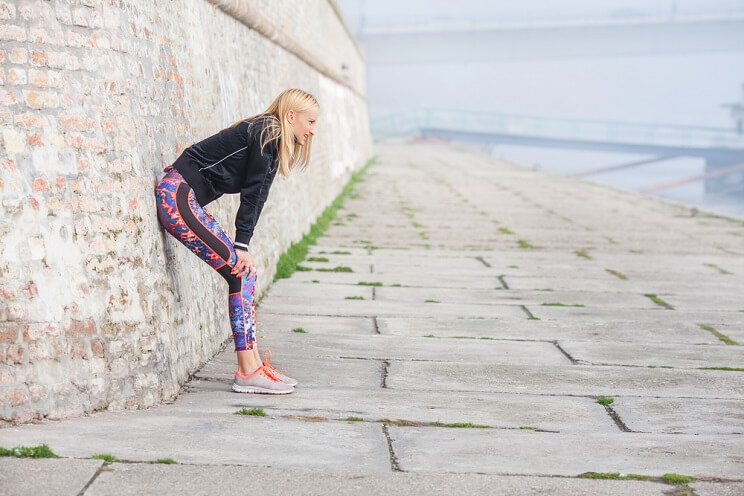
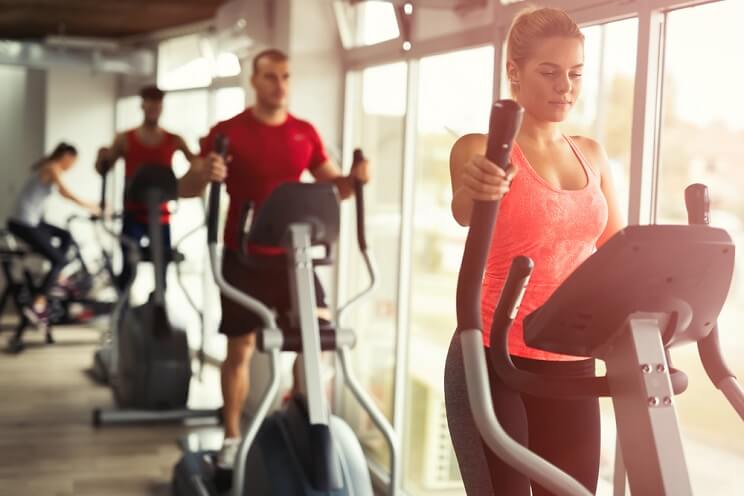
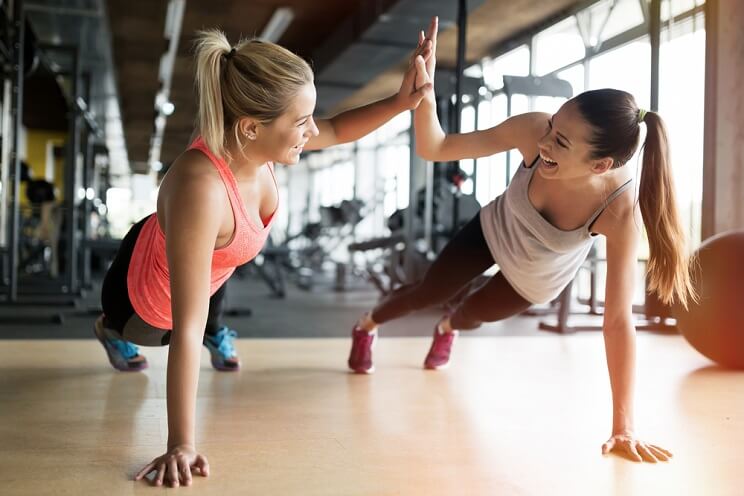
 Easy, Simple Homemade Sriracha
Easy, Simple Homemade Sriracha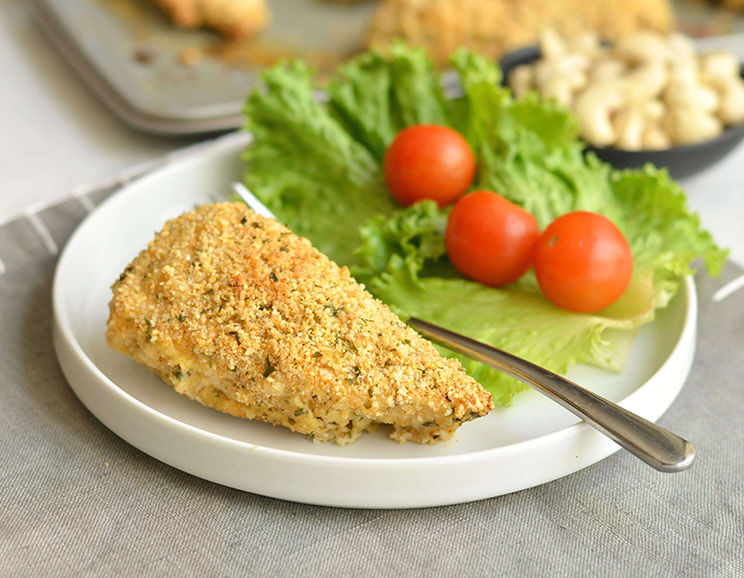
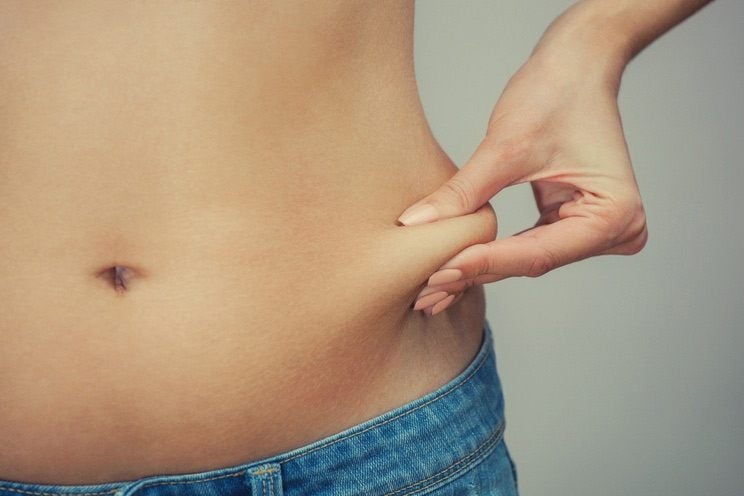
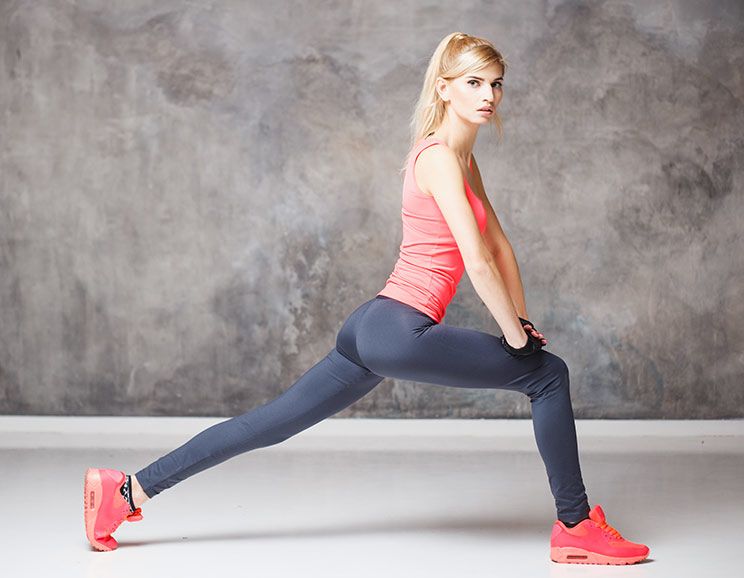
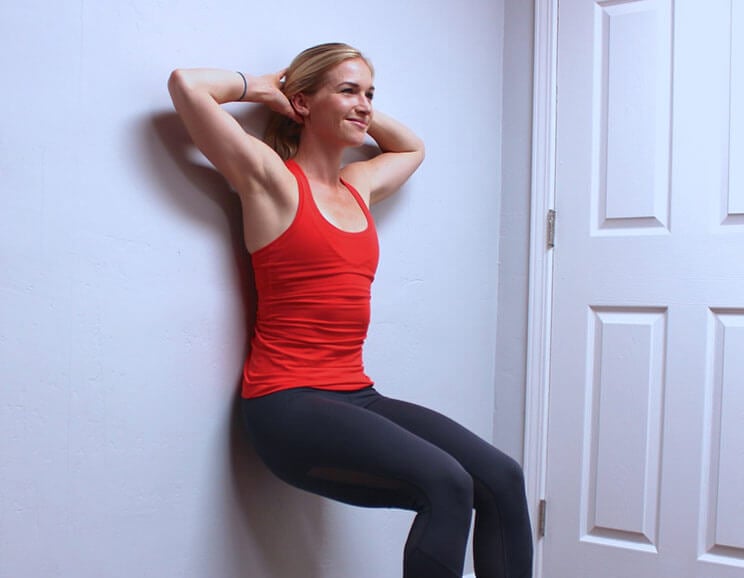
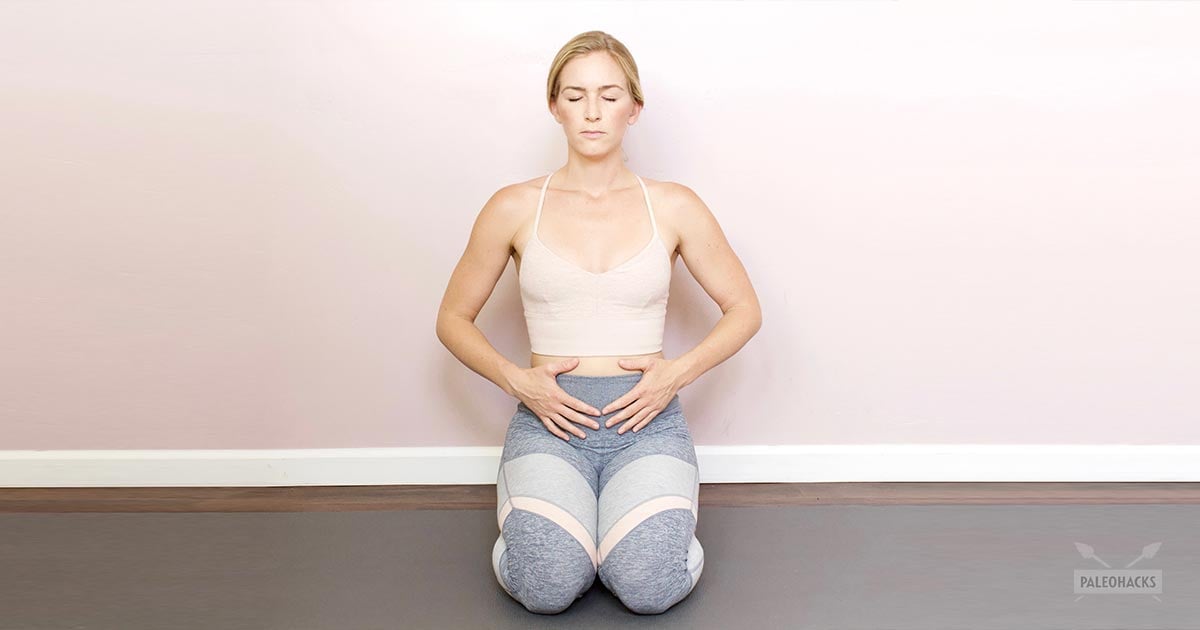
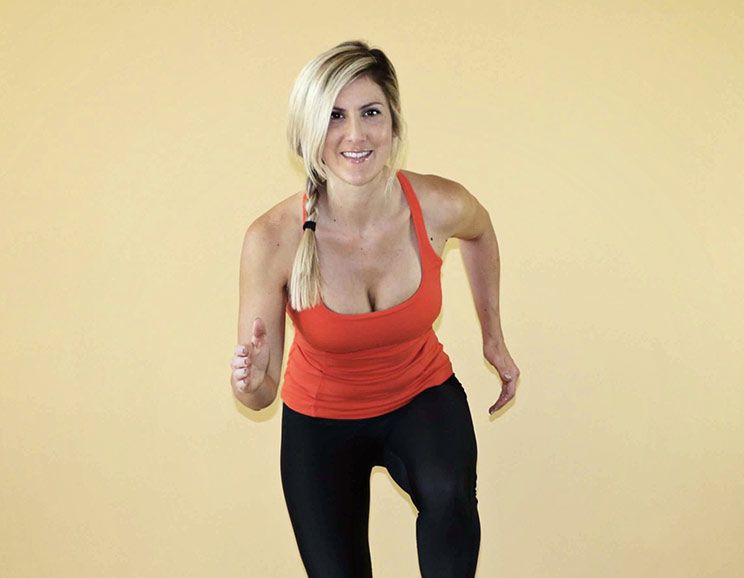
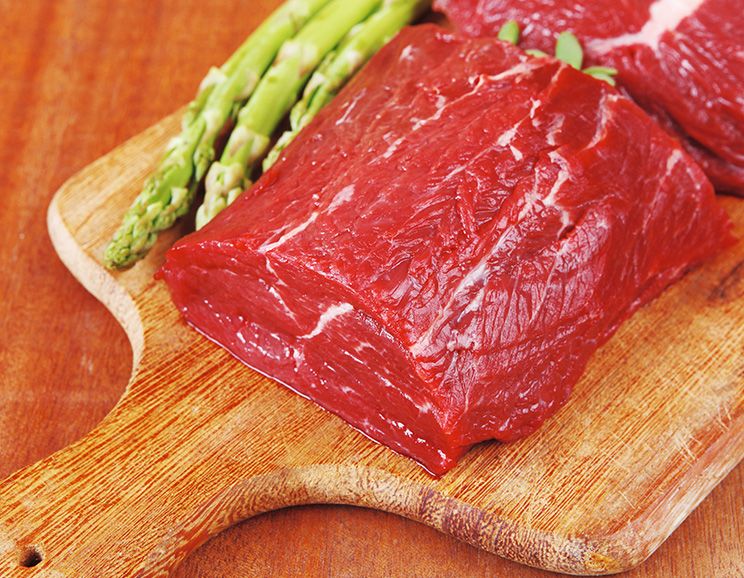
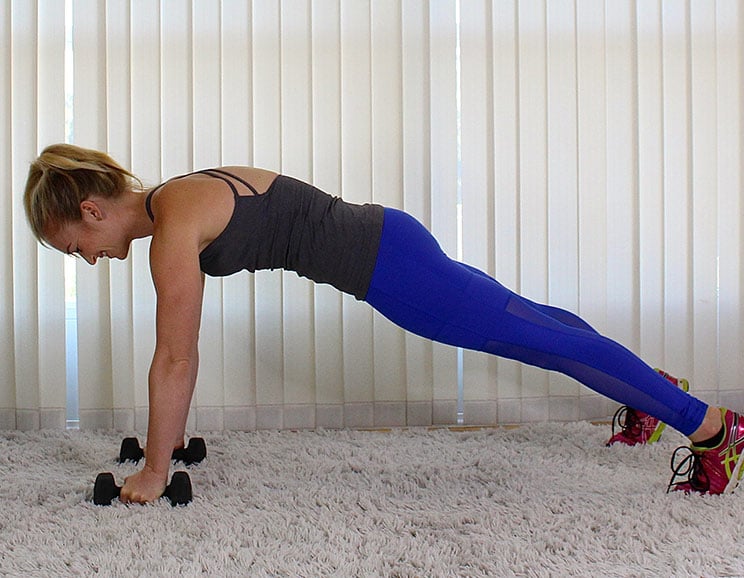
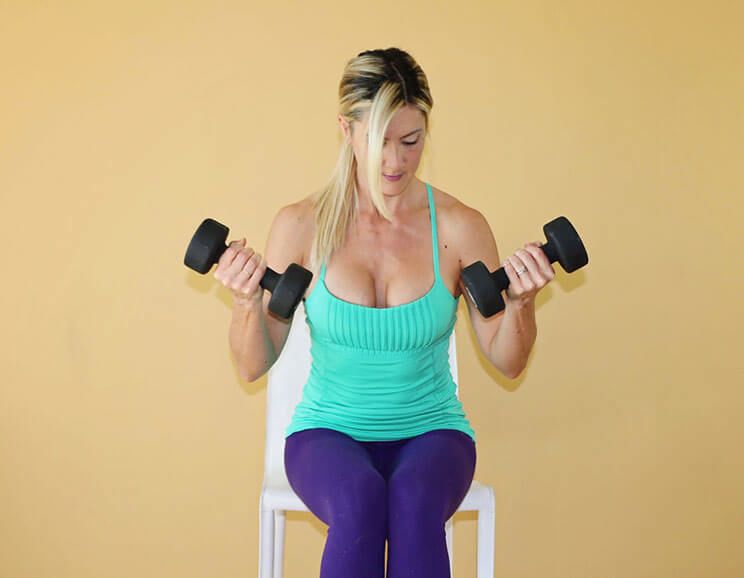
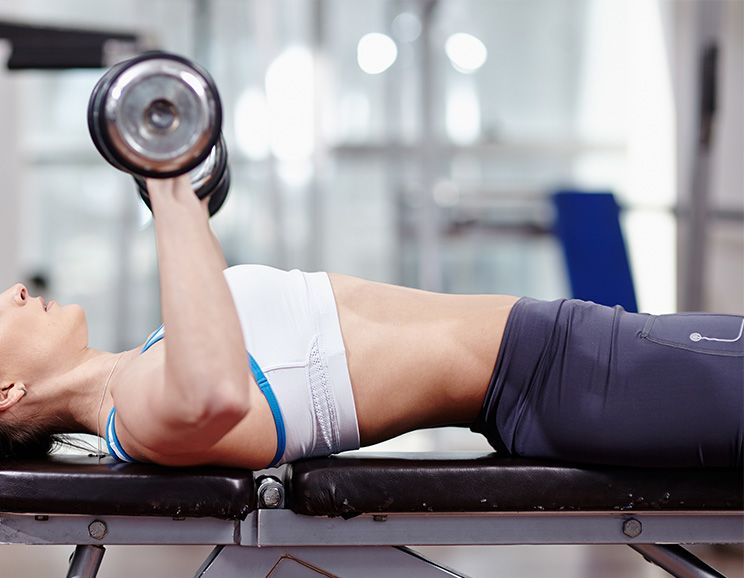
Show Comments